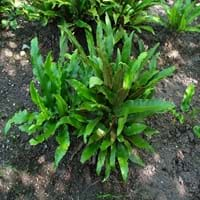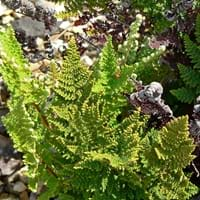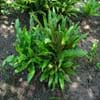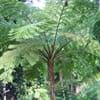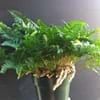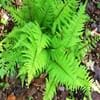Life Span
Perennial
Annual and Perennial
Types
Asplenium nidus, Asplenium trichomanes, Asplenium rutamuraria
Not Available
Number of Varieties
Not Available
Habitat
Shady Edge, Woodland Garden Dappled Shade
Chaparral, Rocky areas
USDA Hardiness Zone
6-8
7-10
Sunset Zone
Not Available
5, 6, 7, 8, 9, 12, 14, 15, 16, 17, 18, 19, 20, 21, 22, 23, 24
Habit
Rosette/Stemless
Clump-Forming
Flower Color
Not Available
Non Flowering Plant
Flower Color Modifier
Bicolor
Bicolor
Fruit Color
Not Available
Non Fruiting Plant
Leaf Color in Spring
Yellow green
Not Available
Leaf Color in Summer
Yellow green
Not Available
Leaf Color in Fall
Yellow green
Not Available
Leaf Color in Winter
Yellow green
Not Available
Leaf Shape
Narrow
Pinnate
Plant Season
Spring, Summer, Fall
Spring, Summer, Fall, Winter
Sunlight
Full Shade, Partial shade
Full Sun, Partial Sun
Growth Rate
Medium
Medium
Type of Soil
Loam, Sand
Clay, Loam, Sand
The pH of Soil
Neutral, Alkaline
Acidic, Neutral, Alkaline
Soil Drainage
Well drained
Well drained
Bloom Time
Not Available
Not Available
Tolerances
Not Available
Drought
Where to Plant?
Container, Ground, Pot
Ground
How to Plant?
Spores
Seedlings
Plant Maintenance
Medium
Medium
Watering Requirements
Average Water Needs
Needs watering once a week, Never Over-water
In Summer
Lots of watering
Lots of watering
In Spring
Moderate
Moderate
In Winter
Average Water
Average Water
Soil pH
Neutral, Alkaline
Acidic, Neutral, Alkaline
Soil Type
Loam, Sand
Clay, Loam, Sand
Soil Drainage Capacity
Well drained
Well drained
Sun Exposure
Full Shade, Partial Sun
Full Sun, Partial Sun
Pruning
Remove damaged leaves, Remove dead leaves, Remove dead or diseased plant parts
Prune to control growth
Fertilizers
All-Purpose Liquid Fertilizer, fertilize in summer
All-Purpose Liquid Fertilizer
Pests and Diseases
Red blotch
Not Available
Plant Tolerance
Not Available
Drought
Flower Petal Number
Single
Single
Foliage Texture
Bold
Fine
Foliage Sheen
Glossy
Matte
Attracts
Butterflies
Not Available
Allergy
Toxic
Not Available
Aesthetic Uses
Showy Purposes
Ground Cover, Showy Purposes
Beauty Benefits
Good for skin and hair
Not Available
Edible Uses
Insignificant
No
Environmental Uses
Air purification, Provides ground cover
Not Available
Medicinal Uses
Astringent, Cholagogue, Diaphoretic, Diuretic, Expectorant, Vulnerary
No Medicinal Use
Part of Plant Used
Leaves
Whole plant
Other Uses
Cosmetics, Used as Ornamental plant, useful as a ground cover
useful as a ground cover
Used As Indoor Plant
No
No
Used As Outdoor Plant
Yes
Yes
Garden Design
Foundation, Mixed Border
Container, Groundcover, Mixed Border, Rock Garden, Wall
Botanical Name
ASPLENIUM scolopendrium
Cheilanthes clevelandii
Common Name
Hart’s Tongue Fern
Myriopteris clevelandii
In Hindi
Burnt Weed
Plant
Myriopteris clevelandii
In German
Burnt Weed
Pflanze
Myriopteris clevelandii
In French
Weed Burnt
Plante
Myriopteris clevelandii
In Spanish
Weed quemado
Planta
Myriopteris clevelandii
In Greek
Burnt ζιζανίων
Φυτό
Myriopteris clevelandii
In Portuguese
Weed Burnt
Plantar
Mariopteris clevelandii
In Polish
spalony Weed
Roślina
Myriopteris clevelandii
In Latin
Holocaustum Weed
planta
Myriopteris clevelandii
Phylum
Pteridophyta
Tracheophyta
Class
Filicopsida
Polypodiopsida
Order
Polypodiales
Polypodiales
Family
Aspleniaceae
Pteridaceae
Genus
Asplenium
Cheilanthes
Clade
Eupolypods II
Not Available
Tribe
Not Available
Not Available
Subfamily
Not Available
Not Available
Properties of Burnt Weed and Myriopteris Clevelandii
Wondering what are the properties of Burnt Weed and Myriopteris Clevelandii? We provide you with everything About Burnt Weed and Myriopteris Clevelandii. Burnt Weed doesn't have thorns and Myriopteris Clevelandii doesn't have thorns. Also Burnt Weed does not have fragrant flowers. Burnt Weed has allergic reactions like Toxic and Myriopteris Clevelandii has allergic reactions like Toxic. Compare all the properties and characteristics of these two plants. Find out which of these plant can be used as indoor plant. If you are interested to decorate your house and garden, find out aesthetic uses, compare them and select the plant which will beautify your surrounding. Along with beautification, try comparing medicinal and edible uses of Burnt Weed and Myriopteris Clevelandii and you can choose the plant having best and most benefits.
Season and Care of Burnt Weed and Myriopteris Clevelandii
Season and care of Burnt Weed and Myriopteris Clevelandii is important to know. While considering everything about Burnt Weed and Myriopteris Clevelandii Care, growing season is an essential factor. Burnt Weed season is Spring, Summer and Fall and Myriopteris Clevelandii season is Spring, Summer and Fall. The type of soil for Burnt Weed is Loam, Sand and for Myriopteris Clevelandii is Clay, Loam, Sand while the PH of soil for Burnt Weed is Neutral, Alkaline and for Myriopteris Clevelandii is Acidic, Neutral, Alkaline.
Burnt Weed and Myriopteris Clevelandii Physical Information
Burnt Weed and Myriopteris Clevelandii physical information is very important for comparison. Burnt Weed height is 20.00 cm and width 20.00 cm whereas Myriopteris Clevelandii height is 30.50 cm and width 30.00 cm. The color specification of Burnt Weed and Myriopteris Clevelandii are as follows:
Burnt Weed flower color: Not Available
Burnt Weed leaf color: Yellow green
Myriopteris Clevelandii flower color: Non Flowering Plant
- Myriopteris Clevelandii leaf color: Not Available
Care of Burnt Weed and Myriopteris Clevelandii
Care of Burnt Weed and Myriopteris Clevelandii include pruning, fertilizers, watering etc. Burnt Weed pruning is done Remove damaged leaves, Remove dead leaves and Remove dead or diseased plant parts and Myriopteris Clevelandii pruning is done Prune to control growth. In summer Burnt Weed needs Lots of watering and in winter, it needs Average Water. Whereas, in summer Myriopteris Clevelandii needs Lots of watering and in winter, it needs Average Water.
